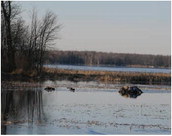Voices heard


Lake association opposes major drawdown to repair Miller Dam sluice gate
Repairs to Miller Dam may end up costing more than anticipated in order...


Lake association opposes major drawdown to repair Miller Dam sluice gate
Repairs to Miller Dam may end up costing more than anticipated in order...